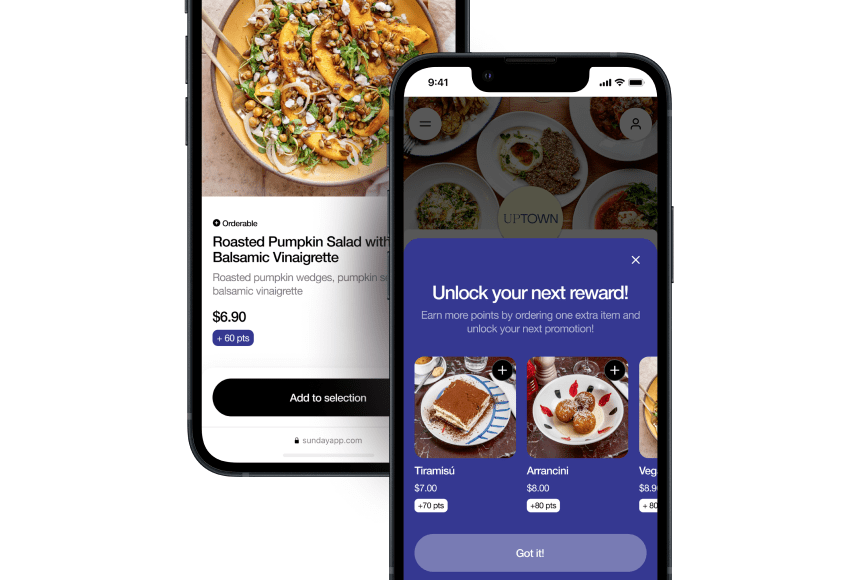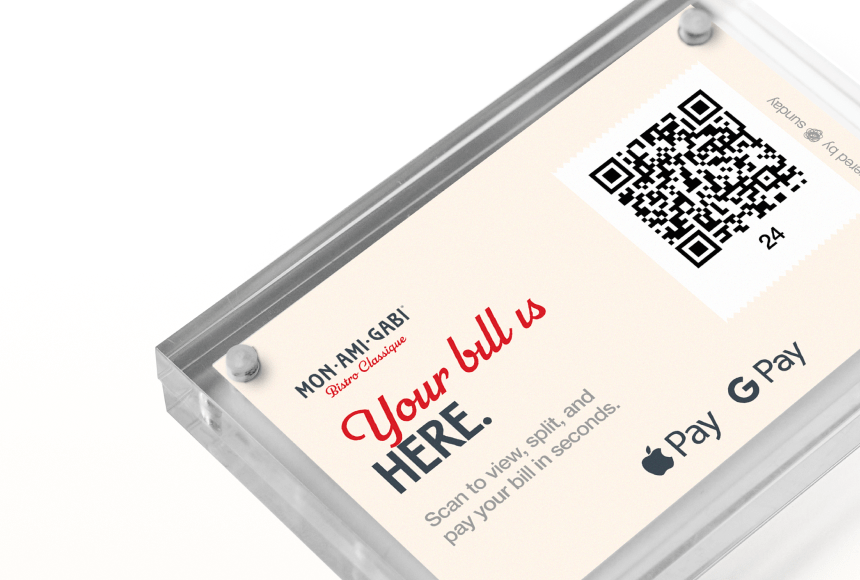
Why a Sluggish Payment Experience Could Be Holding Your Restaurant Back
Understanding the Real Impact of a Slow Checkout
Picture this: You’ve just delivered a delightful meal experience. Your guests enjoyed the food, the service was attentive, everything was running smoothly—until it came time to process the check. Instead of a quick tap or scan, the process drags on. The server has to locate the payment terminal, return to the guest, wait for the card to process, collect a signature, and finally deliver a receipt. Meanwhile, the remaining tables are piling up requests, staff members are juggling multiple tasks, and the once-seamless experience is disrupted.
A slow checkout is more than a fleeting inconvenience. In an industry where margins can be razor-thin and customer experience is paramount, a sluggish payment process can undercut profitability and tarnish your restaurant’s brand. It drains valuable time, tests customers’ patience, and reduces your ability to turn tables efficiently. If you’ve been running a restaurant in the United States, you know that dine-in experiences are often judged by those final moments as guests wrap up their meal. A clumsy or protracted payment process can be the last thing they remember—and not in a good way.
It’s time to explore the true cost of locking your staff and your guests into a drawn-out game of “find the payment terminal” before they can breeze out the door. We’ll look at everything from lost revenue to battered online reviews, and highlight ways to accelerate and enhance the way you handle payments.
The Financial Toll: Cutting Into Margins
Every restaurant owner knows that time is money, especially when it comes to table turnover and staff productivity. Each added minute spent closing out a table can directly impact critical operational metrics. Let’s break it down:
- Fewer Turns Per Table: When tables linger because the payment process takes too long, the number of “turns” each table can achieve during a busy shift decreases. If you shave off even five minutes from each payment transaction, you could potentially serve another full party at that table by the end of the rush.
- Labor Costs: With labor costs in the US restaurant industry on the rise, high-efficiency workflows are crucial. When servers spend extra minutes processing payments, the labor expense grows for every hour on the clock. If you employ multiple servers, the total loss per shift can add up quickly.
- Employee Stress and Burnout: Often overlooked is the emotional toll on your staff. A stressed-out or overextended server is less likely to provide a warm, hospitable experience. In an industry already facing hiring challenges, staff retention is a critical cost factor. A better, faster checkout can reduce friction and help keep morale high.
According to the National Restaurant Association, tight margins and rising operational costs call for efficiency at every turn. The payment stage, while often overlooked, is a prime candidate for an operational upgrade. Quick checkouts keep your team in motion, allowing them to provide top-tier service without being pinned down by unnecessary steps.
Reputation and Customer Experience: The Silent Deal Breaker
Nowadays, diners hold restaurants to higher standards than ever before, thanks in part to digital tools that make rating a restaurant effortless. A stellar meal can be overshadowed by a tedious checkout that makes guests feel impatient or ignored. When your customers reflect on their overall dining experience, the final touch—a lengthy wait to pay—can overshadow the rest of the meal.
Here are just a few ways a slow checkout can damage your reputation with guests:
- Negative Online Reviews: Grumpy guests are more motivated to leave a review over a negative experience. As a result, slow payment times may translate into reduced ratings on platforms like Google or Yelp. Even if the rest of the meal was impeccable, this final hiccup could lead to a dent in your average score.
- Word-of-Mouth Marketing: People talk. If they have to wait an extra 10 or 15 minutes just to settle their bill, they often share that complaint with friends or colleagues. This negative news can spread quickly, hurting brand image in your local market.
- Lost Repeat Business: Customer acquisition in the restaurant world is no easy feat. Cultivating regulars keeps a steady revenue stream. But if someone has a poor checkout experience once, they may be reluctant to come back—even if the food was memorable.
In a world where 60% of diners check online reviews before choosing a restaurant (according to Nation’s Restaurant News), the impact of a single bad buying experience can be immediate and long-lasting. On the flip side, an efficient, guest-friendly payment process can leave a positive final impression, spurring more positive word-of-mouth and glowing reviews.
Cumulative Loss of Time: What Those Extra Minutes Really Add Up To
It’s easy to ignore incremental delays. After all, what’s a minute or two added to the payment cycle? Well, that additional minute, repeated across multiple tables and multiple shifts, quickly becomes a black hole of lost potential. Let’s explore some eye-opening scenarios:
- Lunch Rush Crunch: During the busy lunch window, you might serve 30 tables in two hours. If each checkout is delayed by three minutes, that’s 90 minutes per day wasted solely on inefficient payments. That’s an hour and a half that could have been spent serving new customers or finishing essential prep work.
- Weekend Dinners: An especially busy Saturday can see over 100 tables in a full service day. Three extra minutes per checkout translates to an additional 300 minutes—five hours spent just to process payments. Think of what that time could do if allocated to deeper guest interaction, table setting, or ensuring food quality.
- Annualized Impact: Multiply that wasted time by 300 or more open days per year, and the segment of time “lost” can be massive. Beyond the abstract, these are minutes and hours that translate directly into higher labor costs, fewer chances to seat guests, and less time spent on crucial tasks like training staff or refining the menu.
The equation is straightforward: The slower your checkout, the more it eats into your revenue-generating possibilities.
The Table Turn Advantage: Serve More Guests Without Rushing
A fast checkout isn’t about making customers feel rushed; it’s about allowing them to settle the bill and leave when they are ready, with minimal delay. Streamlining the final step of the dining experience benefits both the diner and the restaurant:
- Improved Guest Flow: When you can promptly clear tables, your host can seat waiting guests sooner. This shortens wait times and enhances customer satisfaction before they even place an order.
- Boosted Sales: More turns per table generally equate to higher sales. Even one additional table turn per day during peak hours can have a dramatic impact on your monthly income.
- A More Relaxed Atmosphere: Ironically, speeding up your payment process can make diners feel less rushed. They’re not held hostage by a missing server or idle payment device; they can leave at their pace, satisfied and relaxed, with no friction at the end of their meal.
Most restaurants are eager to optimize the dining experience without making guests feel they’re being shuffled out. Addressing the payment process is a gentle yet highly effective “nudge” toward better turnover rates.
Case Study: Fast vs. Slow Checkout Over One Busy Weekend
To illustrate just how much of a difference an efficient checkout can make, consider this fictional but realistic scenario from an American steakhouse operating in a mid-sized city. We’ll call it “The Copper Knife.”
In one weekend, The Copper Knife served 300 total tables from Friday night through Sunday brunch. They compared two separate weekends: one using a traditional, slow payment approach, and the other using a streamlined QR-based payment system with minimal staff involvement.
| Metrics | Slow Checkout Weekend | Fast Checkout Weekend |
|---|---|---|
| Average Checkout Time (per table) | 6 min | 2 min |
| Extra Service Hours (staff total) | +8 hours | +2 hours |
| Customer Waits to Pay | Multiple Complaints | Minimal Complaints |
| Online Reviews (Google, etc.) | 4.2 average rating | 4.5 average rating |
By the end of the “Fast Checkout Weekend,” The Copper Knife discovered they had significantly reduced guests’ waiting time. Customer feedback was more positive, reflecting ease and satisfaction. Even more telling, they seated about 20 additional tables over the course of the weekend simply because payment was processed so seamlessly that turnover improved without pushing diners out prematurely.
Hidden Factors: Tips, Upsells, and Staff Engagement
Beyond the obvious advantages, there are some hidden benefits to speeding up your checkout:
- Higher Tips: When a payment process is effortless, customers tend to be less irritated and more generous with tips. A quick digital tip option integrated into the checkout flow can also encourage customers to add a little more.
- Opportunities for Upselling: The final moments before the bill is settled can sometimes be upsell territory: promoting dessert, coffee, or a special to-go item. If your checkout is chaotic, you’ll lose those chances. A smoother system helps staff feel more at ease offering additional items without the guest feeling that they have already waited too long.
- Staff Engagement: Rather than spending their energy tracking down receipts or fiddling with slow payment terminals, your staff can focus on more fulfilling tasks—like greeting new arrivals, providing personal recommendations, or ensuring that the kitchen is running smoothly.
In essence, fewer distractions at the point of payment means more attention can be allocated to activities that elevate the guest experience and increase revenue.
Tech Tools That Simplify and Speed Up Checkout
Fortunately, the restaurant technology market in the US is teeming with solutions that can deliver a streamlined payment process. While not all solutions and tools are created equal, you have a wide array of options to choose from:
- Pay-at-the-Table Devices: Compact, user-friendly payment terminals that servers bring directly to the guest. These devices allow immediate swipe, tap, or chip insert, making the process quick and convenient.
- QR Codes: Placing a QR code on each table so that guests can scan and pay on their own smartphones eliminates the need for physical handoffs and multiple back-and-forth trips. Solutions like this often let your customers tip and receive a digital receipt instantly.
- Mobile POS Apps: Equipping your staff with a mobile POS system on a tablet or smartphone also shortens the wait. A server can handle the entire transaction right at the table, with no need to walk away and come back multiple times.
- Contactless Payment: Apple Pay, Google Pay, and other contactless methods allow diners to just hover their phone over a device. The less friction at payment, the quicker the entire process.
Consider your specific needs: Are you looking to boost table turnover, or do you also want to encourage digital receipts and effortless tipping? Look for a solution that aligns with your brand and guest behaviors. By embracing these time-saving methods, you can minimize the frustration often associated with the payment stage.
Boosting Your Bottom Line with Immediate Operational Wins
Once you’ve decided to prioritize faster checkout processes, the payoff can be quick and noticeable:
- Improved Customer Satisfaction: Streamlined payments reduce friction, leading to more positive feedback and increased chance of repeat visits.
- Greater Staff Efficiency: With less time tied up in payments, staff can serve more tables or provide a higher level of service to existing tables.
- Better Table Utilization: Turning tables more effectively increases seating capacity, boosting revenue potential, especially during peak days and times.
- Reduced Errors: Digital and mobile solutions, which tie directly into your POS system, can help minimize manual data entry and accidental miscues.
In large part, these wins can be traced directly back to a single cause: Freed-up staff time and a reduction in guest frustrations. Both lead to a healthier restaurant operation.
Common Myths About Fast Checkout
Sometimes, owners or managers hesitate to implement a new check-settlement approach because they have become accustomed to older, entrenched processes. Let’s clear up a few misconceptions:
- “Our Guests Will Feel Rushed Out.” Actually, most diners prefer to gain control over how and when they pay. By offering an easy, quick method, you remove friction. They can choose to linger, or pay and leave right away. It’s freedom, not pressure.
- “My Servers Will Lose the Personal Touch.” Moving from a slow, 10-minute back-and-forth to a quick at-table option frees your team to engage guests beyond administrative chores. If anything, it lets them be more personal and attentive.
- “It’s Too Expensive to Upgrade.” While there may be some upfront investment in new hardware or software, the long-term gains in table turnover, improved guest satisfaction, and labor-cost savings generally outweigh the cost. Solutions like scanning a QR code can also be set up with minimal hardware changes.
- “We Don’t Need Technology; We’ve Always Done It This Way.” Tradition is valuable, but when it starts to hurt the bottom line, it’s worth exploring alternatives. Today’s increasingly tech-savvy dining public expects speed and convenience.
Examining these myths can shine a light on an opportunity that has existed for quite some time but is often overlooked.
Integrating Tipping and Online Reviews
Tips are a major part of how servers earn a living in the United States. In many cases, electronic tip options built into a digital payment tool nudge customers to leave bigger tips, while also reducing the awkwardness of scribbling amounts on paper receipts.
Meanwhile, the end of the meal is the perfect time to encourage happy customers to drop a quick review or rating. Some payment solutions—like sunday—include an integrated option that asks diners if they’d like to leave feedback. It might be a small prompt that says, “Enjoyed your meal? Let us know!” This built-in request can gently steer satisfied guests toward platforms like Google Reviews right at the moment of peak satisfaction. This is a strategic way to build your online reputation further.
Leveraging the Power of Data for Process Improvement
An often-overlooked byproduct of a digitalized payment process is the ability to collect meaningful data. How many checks are paid at which times, how long does the payment step typically take, what’s the average tip? This data can guide strategic decisions:
- Identify Busy Times for Extra Staff: When you can see exactly which hours produce the highest volume of table turnovers, you’re equipped to allocate staff more effectively.
- Spot Trends in Spending: Are your guests frequently adding desserts or drinks at the last minute? If so, consider making upsell strategies an integral part of your service procedure.
- A/B Test Payment Methods: Evaluate how quickly each new payment method reduces time spent on checkout. Then pick the method that yields the best ROI and the best ratings from guests.
Over time, harnessing payment data helps transform your restaurant from a good operation into a truly optimized machine—one that’s attuned to your community’s preferences and resilient through industry shifts.
Practical Steps to Implement Faster Checkout
Adopting a faster payment solution may feel intimidating, but you can approach the process in stages:
-
Assess Your Current Setup
Identify key bottlenecks. Are you relying on a single stationary payment terminal? Are guests receiving paper checks without an easy contactless option? Understanding what’s slowing you down today is crucial for picking the right solution tomorrow.
-
Research Suitable Tools
From handheld card readers to QR code solutions, evaluate each based on cost, user-friendliness, and how well they integrate with your existing POS system. Aim for quick staff adoption and minimal friction for guests.
-
Train Your Team
Even the best technology won’t solve inefficiencies if your staff doesn’t understand or trust it. Conduct short, practical training sessions that allow servers to practice real scenarios. Reinforce the benefits: less stress, higher tips, happier guests.
-
Monitor The Results
Once implemented, keep a close eye on checkout times, tip amounts, and guest feedback. Compare data weekly or monthly. This helps you validate improvements and spot areas for further enhancement.
-
Iterate and Evolve
Technology evolves fast. Stay open to improvement—maybe a new update or additional feature could reduce friction even further. Regularly poll your staff and customers, collecting feedback to keep fine-tuning the process.
By following these sequential steps, you’ll not only speed up the checkout but also encourage a culture of continuous improvement—something far too valuable to overlook in a competitive restaurant landscape.
A Glimpse Into the Future: Contactless and Cashless
Over the past few years, consumer preference for contactless and cashless payments in the United States has skyrocketed. According to various restaurant technology reports, digital wallet usage continues to climb, especially among younger diners. This shift points toward an even more frictionless future:
- Zero Physical Interaction: Many guests already prefer to tap their phone or card on a terminal rather than exchange cash. With the continuing evolution of payment technologies, the physical step of handing over a card might eventually disappear altogether.
- Minimal POS Hardware: As more transactions happen instantly on smartphones, you’ll see restaurants investing less in bulky equipment and more in software that enables versatile, integrated functionalities.
- Unified Loyalty Programs: The simpler it is for customers to pay digitally, the easier it becomes to tie loyalty programs, special offers, or “points” to each transaction. This helps you build consistent repeat business.
Stubbornly sticking to older checkout methods may slowly push you out of sync with a rising wave of consumer expectations. Embracing the shift earlier can position your brand as modern and guest-focused, reassuring customers that you’re attuned to their preferences.
When to Make the Leap
Maybe you’re on the fence about whether it’s time for an upgrade in your restaurant’s payment process. You might ask: “Is it really worth the effort, or can we just keep going as we are?” Here are a few signals that you could benefit dramatically from a refresh:
- Excessive Waits During Peak Hours: If you frequently see lines at the host stand or irritated guests waiting just for a check, that’s a glaring red flag.
- Sluggish Table Turns: Look at your metrics. If turnover times are creeping up, even by a few minutes, calculate the potential lost earnings. The math might be eye-opening.
- Rising Labor Costs: If you’re watching your payroll grow but not seeing a corresponding increase in sales, maybe your staff is just occupied with busywork—like long-winded payment steps.
- Mismatch with Customer Preferences: Have you received direct feedback that checking out is a pain? Or do you see that your competition allows simple digital payment while you rely on older, slower methods? That gap might be costing you repeat business.
Making the leap doesn’t necessarily involve ripping out everything you have in place. Incremental improvements—for instance, adding a “pay by QR code” feature on each table—can make a profound difference.
Subtle Mentions of sunday
In the midst of all these solutions, it’s worth noting that sunday offers a payment platform designed to speed up checkouts with features like easy QR scanning, integrated tipping, and the option to prompt for a Google review. It’s just one example of how technology can make the last part of the dining experience as fresh and memorable as the first bite. While every restaurant’s needs are different, considering a solution built from the ground up to streamline the checkout can directly help reduce the costs of slow final steps.
Moving Forward: Adapting to a New Era of Efficiency
Restaurants are evolving from simple eateries to experiences curated around setting, cuisine, service, and convenience. The shift towards seamless payment processes is part of this broader transformation. As dining trends evolve, guests expect an effortless meal from start to finish. If you can deliver that, you bolster your restaurant’s reputation and free yourself—and your staff—from the shackles of old-fashioned processes that belong to another era.
By making checkout faster, you’re likely to see a ripple effect of positive changes: more satisfied diners, more efficient staff, higher table turnover, and better online reviews. And in a climate where eateries compete for every customer, these advantages can be the difference-maker that propels you forward.
Your Questions Answered: Frequently Asked Questions (FAQ)
Below are some common inquiries about streamlining the checkout in a restaurant setting, with direct, simple answers to guide you:
1. Will adopting a faster checkout really improve my bottom line?
Yes. By cutting down wait times at the payment stage, you can turn tables faster, serve more guests, and improve overall guest satisfaction. This typically translates to stronger sales and repeat business.
2. How can I maintain a personal touch if I switch to digital payments?
A quick, mobile-based checkout or a “pay by QR code” method can actually free your staff to offer more personal touches, like drink recommendations or a warm farewell, rather than chasing down slips and receipt printouts.
3. Are my customers ready for a digital payment experience?
Most likely, yes. Contactless payments and mobile apps are rapidly becoming the norm across the United States. A lot of guests now expect a digital option, and some may even be disappointed if it’s not available.
4. Does faster checkout mean less time for upselling and tip collection?
On the contrary. A quicker process allows for a more comfortable conversation at the table without the rush of a busy staff juggling multiple steps. Digital tipping options can encourage higher gratuities, and it’s easier to suggest add-ons when the customer isn’t already restless to leave.
5. What is the first step toward speeding up payments?
Start by diagnosing your existing checkout process. Talk to staff, observe busy shifts, collect feedback from customers, and pinpoint where the holdups occur. Once you know the key problems, you can research solutions—like handheld devices or QR code systems—and prioritize what best fits your restaurant’s specific needs.




